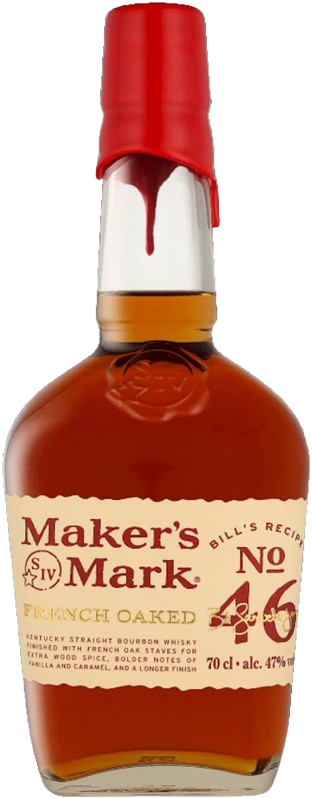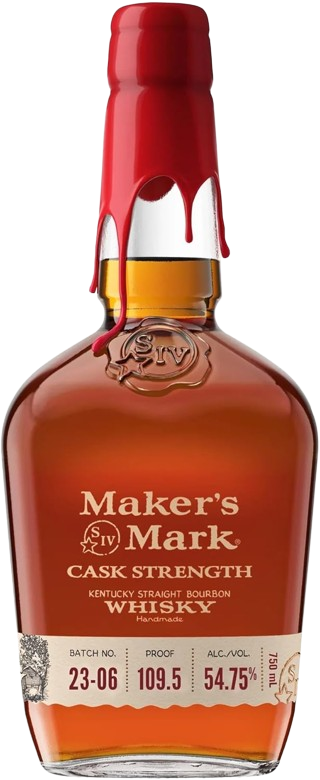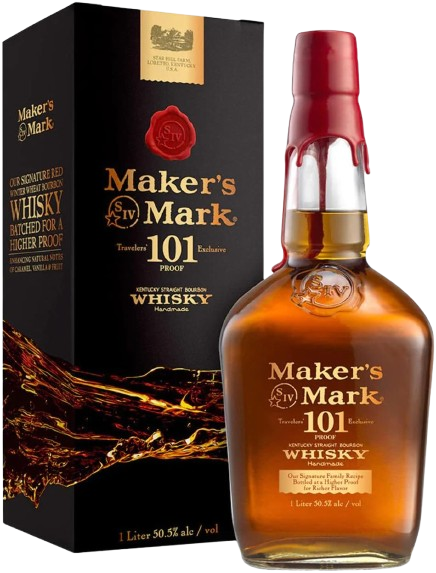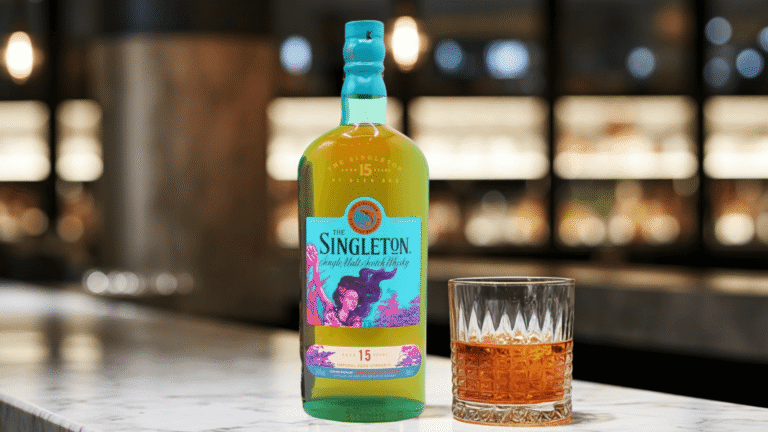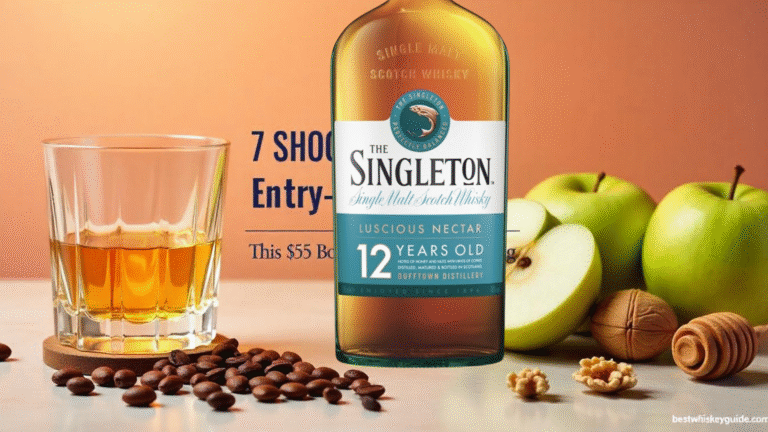Whiskey lovers around the world recognize the distinctive bottle with its iconic red wax seal. Maker's Mark Whiskey has cemented its place as one of America's most beloved bourbons through a steadfast commitment to quality, tradition, and a unique flavor profile that sets it apart from other whiskeys on the market. This article examines the rich history, meticulous production process, and memorable tasting experience of this Kentucky straight bourbon whiskey.
Introduction to Maker's Mark Whiskey
Maker's Mark Whiskey is a small-batch bourbon whiskey produced in Loretto, Kentucky. Known for its smooth, sweet flavor profile, this premium bourbon has become a staple in bars and homes worldwide. The brand's distinctive red wax-dipped bottle makes it instantly recognizable, while its wheated bourbon recipe provides a uniquely approachable drinking experience for both newcomers and seasoned whiskey drinkers.
What makes Maker's Mark stand out in the crowded bourbon market is its consistent quality and dedication to traditional methods. The distillery maintains many time-honored practices that larger producers have abandoned in favor of efficiency, including rotating barrels by hand during the aging process and dipping each bottle in their signature red wax.
History of Maker's Mark Whiskey
Origins and Founding
The story of Maker's Mark begins in 1953 when T. William "Bill" Samuels Sr., a sixth-generation distiller, purchased the historic Burks' Distillery in Loretto, Kentucky for $35,000. Dissatisfied with the harsh character of traditional bourbons of the time, Samuels made the bold decision to discard his family's 170-year-old bourbon recipe and start fresh.
In his quest to create a more refined, smoother bourbon, Samuels Sr. experimented with various grain recipes. He famously tested different combinations by baking loaves of bread, reasoning that grains that made good bread would make good whiskey. This experimentation led to the decision to replace the traditional rye with red winter wheat, creating the signature smoothness that Maker's Mark is known for today.
The first production run of Maker's Mark began in 1954, and the first bottles reached the market in 1958. The bourbon was initially marketed with the tagline "It tastes expensive... and is," positioning it as a premium product even when bourbon was not widely considered a luxury spirit.
The Influence of Margie Samuels
While Bill Samuels Sr. focused on perfecting the bourbon, his wife Margie Samuels played an equally crucial role in creating the brand's identity. With a background in marketing and design, Margie:
- Named the bourbon "Maker's Mark," inspired by the marks that pewter craftsmen would stamp on their finest work
- Designed the distinctive bottle shape and label
- Created the iconic red wax seal that tops each bottle
- Pioneered bourbon tourism by advocating for investments in the visitor experience at the distillery
Margie Samuels' contributions were formally recognized when she was inducted into the Kentucky Bourbon Hall of Fame in 2014, acknowledging her significant impact on the industry.
Evolution and Ownership Changes
Over the decades, ownership of Maker's Mark changed hands several times:
- 1981: Sold to Hiram Walker & Sons
- 1987: Acquired by Seagram
- 2001: Purchased by Allied-Domecq
- 2005: Became part of Fortune Brands after Pernod Ricard's acquisition
- 2011: Became part of Beam Inc. when Fortune Brands split
- 2014: Became part of Beam Suntory (now Suntory Global Spirits as of May 2024)
Despite these ownership changes, the Samuels family has remained involved in operations. Bill Samuels Jr. succeeded his father in leading the company until his retirement in 2011, when his son Rob Samuels took over as Chief Operating Officer.
Key Milestones and Recognition
Maker's Mark has achieved numerous milestones throughout its history:
- 1974: The distillery was listed on the National Register of Historic Places
- 1980: Became a National Historic Landmark, the first active distillery to receive this honor
- 2010: Introduced Maker's 46, the brand's first new expression in over 50 years
- 2013: Faced significant consumer backlash after announcing plans to reduce alcohol content from 45% to 42% ABV due to supply shortages; the decision was quickly reversed, demonstrating the brand's responsiveness to customer feedback
- 2022: Became the largest bourbon distillery to achieve B Corp Certification
- 2022: The first distillery to earn Regenified certification for sustainable agriculture practices
These achievements highlight Maker's Mark's commitment to quality, heritage, and sustainability.
Production Process
Ingredients and Mash Bill
The quality of Maker's Mark begins with its carefully selected ingredients:
Unique Use of Red Winter Wheat
The mash bill (grain recipe) for Maker's Mark consists of:
- 70% corn, which is required by law for bourbon production
- 16% red winter wheat, replacing the more common rye grain
- 14% malted barley
The substitution of wheat for rye is perhaps the most distinctive aspect of Maker's Mark's production. This choice, made by Bill Samuels Sr. after his bread-baking experiments, results in a smoother, sweeter flavor profile compared to the spicier character of high-rye bourbons.
The water used in production comes from a limestone shelf on Star Hill Farm. The limestone naturally filters out iron (which can give whiskey an off-taste) while adding calcium and magnesium, which are beneficial for fermentation.
Distillation and Aging
Maker's Mark employs a meticulous production process that maintains many traditional methods:
- Grain Preparation: The grains are gently crushed in a roller mill to preserve their natural sweetness without overheating.
- Fermentation: The mash ferments in century-old cypress wood and stainless steel fermentation vats using a proprietary yeast strain that has been passed down through generations.
- Distillation: Maker's Mark uses a double distillation process similar to Scottish whisky production. The first distillation takes place in a 3-foot diameter, 37-foot tall copper column still with 16 plates. The second distillation occurs in a copper pot still. The use of copper helps remove sulfates, further refining the spirit.
- Aging: Unlike many distilleries that age their whiskey for a fixed time period, Maker's Mark ages its bourbon to taste, typically for 5-7 years. The whiskey matures in new charred white oak barrels with a grade three char.
- Barrel Rotation: One of the most distinctive aspects of Maker's Mark's production is the hand-rotation of every barrel in their warehouses. This labor-intensive process ensures each barrel experiences similar temperature variations throughout the aging process, resulting in consistent flavor across all bottles. Barrels are rotated by hand to expose each cask to varying temperatures and are tasted by a panel to determine when to move them to cooler areas of the warehouse.
Bottling and the Iconic Red Wax Seal
The final step in the production process is bottling. Each bottle of Maker's Mark is:
- Filled with bourbon at 90 proof (45% ABV) for the standard expression
- Hand-dipped in the signature red wax, creating a distinctive seal that covers the top of the bottle and drips slightly down the neck
- Inspected to ensure quality standards are met
The hand-dipping process, while labor-intensive and time-consuming, is central to the brand's identity and commitment to craftsmanship. Each bottle's wax seal is slightly different, emphasizing the human touch that goes into every bottle of Maker's Mark.
Tasting Notes and Bourbon Characteristics
Appearance
In the glass, Maker's Mark presents a rich amber to rust-orange color with a medium body and good clarity. The color is natural, coming exclusively from the aging process in charred oak barrels.
Aroma
The nose of Maker's Mark is inviting and approachable with notes of:
- Vanilla and caramel
- Toasted oak
- Fresh bread
- Light fruitiness (often described as apple or citrus)
- Sweet malt
- Hints of cinnamon spice
The aroma is notably free of the sharp, peppery notes found in high-rye bourbons, reflecting its wheated mash bill.
The Role of Wheat in Flavor Development
The decision to use wheat instead of rye in the mash bill is perhaps the most significant factor in Maker's Mark's distinctive taste profile. While most American whiskey producers use rye as their flavoring grain, Maker's Mark's use of red winter wheat creates:
- A gentler, smoother entry on the palate
- Reduced spiciness compared to traditional bourbon brands
- Enhanced sweetness that makes it more approachable for novices
- A soft, bread-like quality that forms the foundation of its flavor profile
- A more rounded mouthfeel that contributes to its reputation as a "gateway bourbon"
This wheat-forward approach aligns Maker's Mark with other sought-after wheated bourbons like Weller and Pappy Van Winkle, though with its own distinctive character and wider availability.
Palate
On the palate, Maker's Mark delivers a smooth, well-balanced experience with:
- Sweet vanilla and caramel up front
- Oak and char notes that provide structure
- Bread-like qualities from the wheat
- Fruity essences (cherry, apple)
- Mild spice that gently warms rather than burns
- A creamy, almost buttery mouthfeel
Alcohol Bite and Astringency
An important aspect of Maker's Mark's profile is its moderate alcohol bite and controlled astringency. At 90 proof (45% ABV), it offers:
- A noticeable but gentle warming sensation rather than a harsh burn
- A mild tannic quality that provides structure without overwhelming dryness
- Enough alcohol presence to carry its flavors but not enough to mask its subtleties
- A slight astringency on the mid-palate that helps balance the sweetness
- A clean alcohol note that integrates well with the other flavor components
This balanced approach to alcohol presence makes Maker's Mark particularly versatile, working well in both neat pours and cocktails without requiring significant dilution to tame excessive heat.
Balance and Complexity
Despite its reputation for approachability, Maker's Mark offers surprising complexity and balance for its price point:
- The sweetness from wheat and corn is counterbalanced by oak tannins and barrel char
- Fruity notes play against earthy and grain-forward flavors
- Subtle layers of flavor that develop throughout the tasting experience
- A delicate interplay between sweetness, spice, oak, and grain
- Enough complexity to interest experienced bourbon drinkers while remaining accessible to newcomers
This balance puts Maker's Mark in a unique position among affordable bourbons – it's neither overly simple nor intimidatingly complex, making it a versatile option for various drinking preferences and occasions.
Finish
The finish is:
- Medium in length
- Smooth and clean
- Leaving lingering notes of oak, caramel, and light spice
- Pleasantly warming without harshness
- Often described as having a soft, slightly sweet conclusion
For those looking to explore other quality whiskeys under $100, Maker's Mark represents an excellent benchmark against which to compare other offerings.
Variants and Special Editions
While the standard Maker's Mark bourbon remains the flagship product, the brand has expanded its offerings to include several notable variants:
Maker's 46
Maker's 46 was the first major innovation in the Maker's Mark lineup, introduced in 2010. This expression starts with fully mature Maker's Mark that is then finished for 9-10 weeks with seared French oak staves inserted into the barrel. The result is a more complex bourbon with:
- 94 proof (47% ABV)
- Enhanced vanilla and caramel notes
- Added layers of baking spices
- More pronounced wood influence
- A longer, spicier finish
The "46" name refers to the profile number of the French oak staves used in the finishing process.
Cask Strength
Cask Strength is Maker's Mark bottled straight from the barrel, uncut and unfiltered. Released in 2014, this expression delivers the full intensity of Maker's Mark's flavor profile:
- Varying proof between 108-114 (54-57% ABV) depending on the batch
- Concentrated flavors of brown sugar, vanilla, and mint
- Richer mouthfeel and more robust character
- Bold intensity with vanilla, brown sugar, and orange peel on the palate
- Long and warming finish with nutty and caramel notes
Despite its higher alcohol content, Maker's Mark Cask Strength maintains the brand's characteristic smoothness and approachability.
Maker's Mark 101
Maker's Mark 101 is a higher-proof version of the original, bottled at 101 proof (50.5% ABV). Originally available only at the distillery and in duty-free shops, it features:
- Intense aromas of caramel, vanilla, and spice
- Rich and full-bodied with notes of cherry, toffee, and orange peel
- Long and dry finish with black pepper and tannins
- A bolder and spicier experience compared to the original
Maker's Mark - Cellar Aged 2024
Maker's Mark Cellar Aged 2024 represents the brand's venture into extended aging. Released in September 2024, this premium offering combines:
- A blend of 12- and 13-year-old bourbons
- Aged in a limestone cellar for enhanced complexity
- Limited availability and premium pricing (approximately $600+)
- Deeper, richer flavor profile than the standard expression
- Complex oak character balanced with the wheated smoothness
This expression follows the award-winning 2023 release, which blended 11- and 12-year-old bourbons and received significant acclaim.
Wood Finishing Series and Private Selection
- Wood Finishing Series: Limited releases using different wood stave combinations to create unique flavor profiles. These bottles typically retail between $80-$250.
- Private Selection: A program allowing retailers to select their own wood finishing stave combinations, creating customized expressions of Maker's Mark. Prices generally range from $70-$90, offering a personalized flavor experience tailored to specific preferences.
Comparisons with Competitors
How Maker's Mark Whiskey Stands Out
In the crowded bourbon market, Maker's Mark distinguishes itself through:
- Consistent Quality: The hand-rotation of barrels and aging to taste rather than time ensures a reliable product.
- Distinctive Branding: The red wax seal and square bottle create immediate brand recognition.
- Approachability: The wheated mash bill produces a smoother bourbon that appeals to a wide range of palates.
- Craftsmanship: Traditional production methods, including the hand-dipping of bottles, emphasize the human element in production.
- Heritage and Transparency: The distillery's historic landmark status and welcoming visitor experience reinforce the brand's authenticity.
Comparisons with Other Wheated Bourbons
Maker's Mark belongs to the category of wheated bourbons, which also includes brands like:
- Larceny: Generally priced lower than Maker's Mark, with a similar wheated smoothness but often perceived as having less complexity.
- Pappy Van Winkle: The most famous and sought-after wheated bourbon, priced significantly higher than Maker's Mark and extremely limited in availability.
- W.L. Weller: Buffalo Trace's wheated bourbon, which has grown in popularity and price in recent years.
Among these wheated bourbons, Maker's Mark offers a balance of availability, price, and quality that many consumers find appealing. While not as rare as Pappy Van Winkle or as inexpensive as some entry-level wheated bourbons, it delivers a consistent, premium experience at a reasonable price point.
When compared to traditional high-rye bourbons like Knob Creek, Maker's Mark presents a distinct flavor profile:
- Less peppery spice and more gentle warmth
- Greater emphasis on sweetness and vanilla notes
- Smoother mouthfeel with less burn
- More approachable for those new to bourbon
Reviews and Consumer Opinions
Summary of Expert Reviews
Maker's Mark consistently receives positive reviews from spirits critics and publications:
- Awarded a Double Gold medal at the 2021 San Francisco Spirits Competition
- Received a Gold medal at the 2022 International Spirits Challenge
- Scored 80/100 on Whisky Connosr from 24 reviewers
- Breaking Bourbon describes it as "leaning into the sweeter side" and "appealing to all bourbon drinkers"
Expert reviewers often highlight the bourbon's consistency, approachability, and value for money. Many note that while it may not offer the complexity of some higher-priced bourbons, it delivers excellent quality for its price point.
Common Consumer Feedback
Consumer opinions on Maker's Mark typically focus on:
- Smoothness: Many consumers, especially those new to bourbon, appreciate its easy-drinking character.
- Versatility: Fans note it works well both neat and in cocktails.
- Reliability: Consumers value the consistent quality from bottle to bottle.
- Gifting: The distinctive packaging makes it a popular gift choice.
- Value: Generally viewed as offering good quality for the price.
Critical feedback sometimes mentions:
- Some experienced bourbon drinkers find it lacks complexity compared to higher-proof or older expressions.
- Others occasionally note that the flavor profile is "too smooth" or lacks the boldness they prefer.
Notable Anecdotes from Enthusiasts
The 2013 decision to lower the alcohol content from 45% to 42% ABV created one of the most notable moments in recent bourbon history. The swift and vocal consumer backlash demonstrated the passionate following Maker's Mark has cultivated. The brand's quick reversal of this decision showed its responsiveness to customer feedback and reinforced consumer loyalty.
Many enthusiasts also share stories of visiting the distillery in Loretto, Kentucky, with the experience of hand-dipping their own bottle in the signature red wax being a particularly memorable highlight.
Maker's Mark Whiskey in Popular Culture
Appearances in Media and Events
Maker's Mark has established a strong presence in American culture:
- The brand is associated with the Kentucky Derby, with specially designed commemorative bottles
- Maker's Mark has appeared in numerous films and television shows, often as a signifier of quality bourbon
- The distillery is a key stop on the Kentucky Bourbon Trail, attracting thousands of visitors annually
- Maker's Mark sponsors various cultural and sporting events, including horse racing and golf tournaments
Influence on Bourbon Culture
Maker's Mark has played a significant role in shaping bourbon culture:
- Pioneered bourbon tourism through Margie Samuels' early emphasis on the visitor experience
- Helped elevate bourbon's status from a regional spirit to a globally respected category
- Demonstrated that premium bourbon could appeal to a wide audience beyond traditional whiskey drinkers
- Set standards for craft and quality that influenced many smaller distilleries that followed
The brand's marketing has consistently emphasized heritage and craftsmanship, helping to establish bourbon as an authentic American product with cultural significance beyond just being an alcoholic beverage.
Sustainability Initiatives
Maker's Mark has made significant strides in environmental responsibility:
- Achieved B Corp Certification in 2022, becoming the largest bourbon distillery to earn this distinction
- First distillery to earn Regenified certification, highlighting sustainable agriculture at Star Hill Farm
- Implemented regeneratively grown grains in their production
- Established a Natural Water Sanctuary to protect their water source
- Became a net-zero landfill operation
- Expanded solar energy use at the distillery
These efforts have earned Maker's Mark accolades, including the IWSC's 2024 Green Spirit Initiative Trophy, reflecting their commitment to sustainable practices in the spirits industry.
Recent Marketing Campaigns
Maker's Mark continues to evolve its brand messaging:
- "Make Your Mark" Campaign (2023): Launched on July 27, 2023, emphasizing excellence and unconventional decisions in the pursuit of quality bourbon.
- "Perfectly Unreasonable" Campaign (2025): Launched on February 17, 2025, celebrating the brand's relentless pursuit of quality and willingness to go above and beyond industry norms.
These campaigns highlight the brand's dedication to quality and its unique place in the bourbon industry, reinforcing its image as a premium, crafted product.
The Visitor Experience

For those interested in experiencing Maker's Mark firsthand, the distillery offers:
- Tours of the historic facilities in Loretto, Kentucky
- Educational experiences about the bourbon-making process
- Tastings of various Maker's Mark expressions
- The opportunity for visitors to hand-dip their own bottle in the signature red wax
- Special events and seasonal activities
- A restaurant serving bourbon-inspired cuisine
The distillery experience has become an important part of the brand's identity, allowing consumers to connect with the heritage and craftsmanship behind Maker's Mark.
Conclusion
Summary of Maker's Mark's Impact
Since its founding in 1953, Maker's Mark has grown from a small Kentucky distillery with an innovative idea to one of the world's most recognized bourbon brands. Its impact can be seen in several areas:
- Popularizing wheated bourbon as a smoother alternative to traditional high-rye recipes
- Establishing premium bourbon as a category through innovative marketing and positioning
- Setting standards for craft production that continue to influence the industry
- Pioneering bourbon tourism and experiential marketing
- Demonstrating how traditional methods can be maintained even as a brand grows globally
Final Thoughts on its Place in the Bourbon World
Maker's Mark occupies a unique position in the bourbon landscape. It bridges the gap between mass-market bourbons and craft spirits, offering accessibility without sacrificing quality or heritage. The distinctive red wax-sealed bottle has become an icon not just of bourbon, but of American craftsmanship.
While the bourbon world continues to evolve with new craft distilleries, limited releases, and ever-higher prices for aged expressions, Maker's Mark remains true to its original vision: creating a smooth, approachable bourbon that can be enjoyed by anyone. This consistency, combined with selective innovation through expressions like Maker's 46 and Maker's Mark Cellar Aged, ensures that Maker's Mark will remain relevant and respected for generations to come.
What began as one man's quest to create a bourbon he actually enjoyed drinking has become a global symbol of quality, craftsmanship, and American tradition. Whether enjoyed neat, on the rocks, or in a classic cocktail, Maker's Mark continues to deliver on Bill Samuels Sr.'s original promise of a bourbon that's smooth enough to appeal to anyone's palate.
Interesting Facts and Trivia
- The "Whisky" Spelling: Maker's Mark is one of the few American whiskeys that spells "whisky" without the "e." This is a nod to the Samuels family's Scottish-Irish heritage.
- Historic Grounds: The Maker's Mark distillery is located at Star Hill Farm, a site that has been producing whiskey since 1805, making it Kentucky's oldest whiskey-making site.
- Ambassadors Program: Maker's Mark Whiskey offers a brand ambassador program that allows fans to have their name printed on a barrel and receive updates as it ages.
- Custom Labels: The brand offers a service where customers can create personalized labels for bottles, making them popular as gifts for special occasions.
- Seasonal Releases: Maker's Mark occasionally produces limited editions with different colored wax, such as a mint julep version with green wax for special events.
References
- Maker's Mark Official Website
- San Francisco Spirits Competition Results
- International Spirits Challenge Awards
- Whisky Connosr Reviews
- Breaking Bourbon Analysis
- B Corp Certification Records
- Press Releases on Recent Marketing Campaigns and Product Launches


